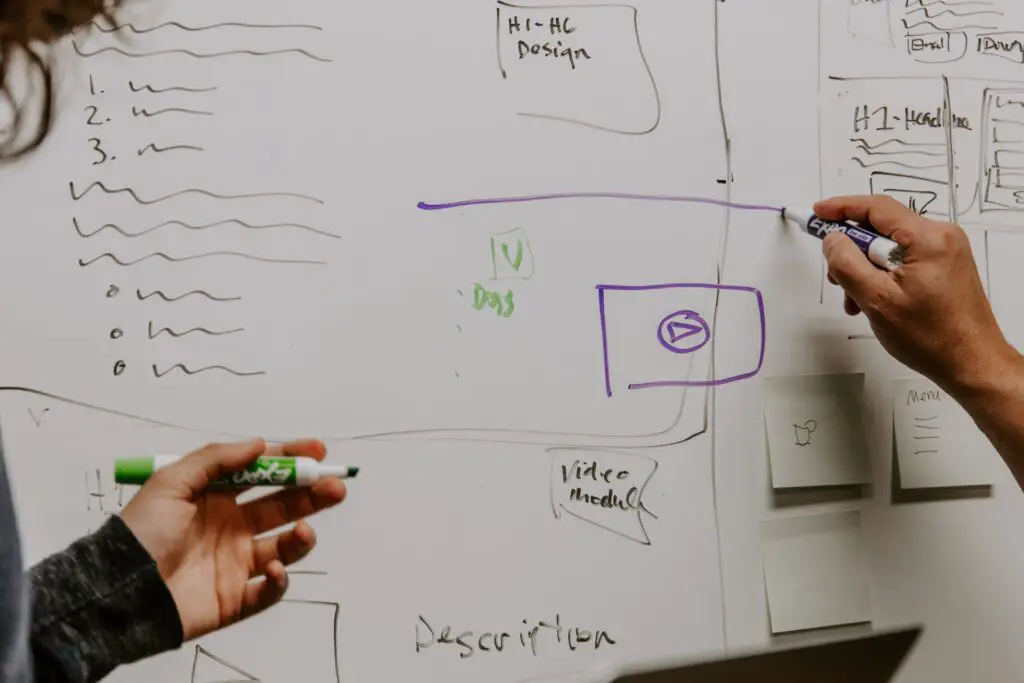IELTS Reading Multiple choice questions provide you with several options to answer a question.
Some IELTS Reading multiple choice questions ask you to select only one out of the four given options. Other multiple choice questions require you to select more than one correct answer. So, you need to see the instructions carefully before attempting these questions.
When several multiple choice questions are asked, each with only one correct answer, the answers can be found in the text in the same order as the questions.
The answers can be found in the text in the same order as the questions.
Start by reading and understanding the first question. Each question has keywords which tell you what type of word or phrase to search for in the text.
Most of the times, you have to scan the passage to find the synonym of the keywords in the question.
After finding the first answer, move to the second question and so on. The next answers will always be below the last answer in the text.
IELTS Reading Multiple choice questions practice
| No water at the end of Melamchi tunnel |
|---|
| Less than four weeks remain for the date that was touted as the day when water from the Melamchi River would flow through the taps of Kathmandu Valley’s residences. But although the government has already conceded that it would miss the deadline, it has not been able to offer a new timeframe, putting completion of the much-hyped solution to Kathmandu’s water woes in limbo. On Sunday, local workers of the Italian contractor firm Cooperativa Muratori e Cementisti di Ravenna (CMC), which took over the Melamchi Water Supply Project in July 2013, went on a strike protesting the decision of the company to fire one of them. Company officials said that managing workers was their internal matter. Earlier in September, the CMC had halted all tunnel works citing the lack of materials due to strikes in several parts of the country. But, according to the contract, it cannot stop the project under any circumstances and has to keep buffer stock enough for a month. Meanwhile, project chief and Executive Director of the Melamchi Water Supply Development Board Ghanashyam Bhattarai said that they are currently reviewing the CMC’s capability to work on the project. “The company cannot be removed from the project as we are under contract, but due to its regular inefficiencies we have not even been able to identify when it will finish the project,” Bhattarai said. Informed sources say that as the project is being funded by the Asian Development Bank, Nepal cannot unilaterally deal with the contractor. The CMC had replaced the previous contractor China Railway 15 Bureau Group after the government terminated its contract for failing to carry out work as scheduled. Out of the total 26.5 km tunnel required for channeling the water from the Melamchi River in Sindhupalchok district to a treatment plant in Sundarijal, Kathmandu, China Railway dug only 6.5km and the CMC was awarded a Rs7.72 billion contract to dig the remaining 20 kilometers. The government had claimed that the first phase of the Melamchi project would be completed by April 13, 2016 when it would start pumping 85 million liter water per day (mld) to the water-starved Kathmandu Valley. In July last year, when releasing the budget for the current fiscal year, the government had promised that water from the project would be supplied to all households in Kathmandu within two years. Melamchi Water Supply Project is one of the biggest recipients of the national budget this fiscal with an allocation of Rs4.95 billion. Bhattarai informed that the CMC has finished digging 15 km of the tunnel so far. But against the contractual agreement to dig 40 metres of the tunnel each day, it has only been able to dig 30 to 32 metres per day. The project can issue a ‘notice to correct’, a last resort when the contractor defaults on the contract, which leads to its nullification if the contractor does not comply even after. The contractor seems to be purposefully provoking the Nepali side to issue the notice so that it can cancel the contract. Bhattarai had earlier said that the CMC is riding on this vulnerability. But that would mean officials reach a point of no return if the notice is issued as the process will have to be started from scratch to find a new contractor, inviting another setback. If the current contract is terminated, the project will be suspended indefinitely as finding yet another contractor involves new deal with donors, international bidding process, signing new agreements and tackling all the procedural and bureaucratic hurdles that come along. As the company is already certain to miss the deadline, it will be eligible for variation cost – the amount the contractor is entitled to receive if the project goes beyond the set completion date. Local agents of the CMC were unavailable for comment while the company headquarters did not reply to the Post’s queries. However, Hemanta Joshi, security in-charge for the project in Sindhupalchok, said that tunnel digging in the area has been slow due to difficulties in breaking the rock and due to the earthquakes and fuel shortages of last year. But he expressed confidence that at the current pace they will be able to complete the tunnel in eight to nine months. Though the project was envisioned in the late 1990s, the first agreement for its construction was signed in 2003 with funding from several donors and developmental partners. The project was originally supposed to be completed by 2007. The tunnel can channel 170mld water but the water treatment plant being constructed can only process 85mld and another will be required to treat all the water. Valley residents had pinned their hope on Melamchi to meet their water needs. The average daily demand for water in the Valley is about 400mld. But the Valley’s water supply authority, Kathmandu Upatyaka Khanepani Limited, supplies only around 140mld in the rainy season and 80mld water in winter. Besides, 36 percent of the water is lost due to leakage which means Valley residents get only about 86mld water in the rainy season and about 51mld in the dry season. |
| This text has been adapted from a news article by Gaurav Thapa published in The Kathmandu Post on 21 February 2016. An archive of the original article can be found at https://kathmandupost.com/valley/2016/03/21/no-water-at-the-end-of-melamchi-tunnel |
Choose two letters, A-E
Which TWO of the following statements are made in the text about the Melamchi Water Supply Project?
A Before July 2013, China Railway 15 Bureau Group was the contractor of the Melamchi Water Supply Project.
B China Railway 15 Bureau Group had supervised the construction of 20 kilometers of tunnel from the Melamchi River.
C The Melamchi River currently supplies 85 million liters of water per day to the Kathmandu Valley.
D Nepal government is the sole investor in the Melamchi Water Supply Project.
E The government of Nepal had assured the public about timely completion of the Melamchi Water Supply Project.
Click to reveal answers »
A, E
Choose the correct letter, A, B, C or D.
Write the correct letter in boxes on your answer sheet.
1 According to the text, why had the workers of the CMC gone against the company?
A The CMC was unable to meet the deadline of the Melamchi Water Supply Project.
B There was a shortage of construction materials.
C The contract of one of the employees was terminated.
D Italian and Nepali workers did not get along.
2 What happens if a contractor fails to comply with the ‘notice to correct’?
A The contract is scrapped.
B The payment is stopped.
C Donations from international agencies is sought.
D The contractor is sued in a local court.
3 Why are Nepali authorities reluctant to terminate the contract with the CMC?
A They are worried about facing lawsuits.
B They will need to terminate contracts with other firms as well.
C They are concerned about administrative obstacles in hiring a new contractor.
D They do not want international meddling in domestic affairs.
4 What comment is made about the water treatment plant for the Melamchi project?
A It can process more water than the project can supply.
B It did not receive any funding from international donor agencies.
C Its construction was delayed several times.
D It cannot purify all the water that will be released.
5 According to the last paragraph, which of the following is correct about the drinking water situation in the Kathmandu Valley?
A The supply of water in Kathmandu far outstrips the demand.
B Infrastructural reasons account for the loss of over a third of water in the Kathmandu Valley.
C The residents of Kathmandu consume more water in the winter season.
D The price of water for residential purposes in cheaper in Kathmandu.
Click to reveal answers »
1. C, 2. A, 3. C, 4. D, 5. B
Next lesson:
IELTS Reading: Matching sentence endings

